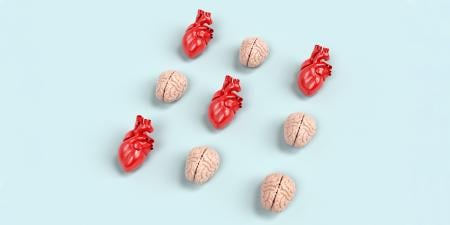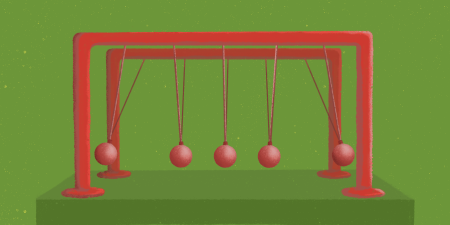Abstract
It is critical for brain death diagnosis to be accurate. Although standardized guidelines and institutional protocols for brain death determination exist, for many physicians, lack of understanding about brain death leads to confusion and muddles interactions with patients’ loved ones at the end of life. Using a case-based approach, this article demonstrates what tends to go wrong in erroneous brain death diagnoses and clarifies what physicians and educators should do to help avoid these errors.
Uncertainty About Brain Death
Consciousness, a state of awareness of self and environment, requires arousal and cognition.1 In coma, there is an absence of awareness of self and environment, even when the patient is vigorously stimulated.1 According to the Uniform Determination of Death Act, which was proposed in 1980 by the National Conference of Commissioners on Uniform State Laws in cooperation with the American Medical Association and the American Bar Association, an individual who has sustained “irreversible cessation of all functions of the entire brain, including the brain stem, is dead. A determination of death must be made in accordance with accepted medical standards.”2 The American Academy of Neurology has since established and reaffirmed standards for determination of brain death.3,4 Determination of brain death in the pediatric population is currently based on separate guidelines from the Society of Critical Care Medicine, the American Academy of Pediatrics, and the Child Neurology Society.5 There are no instances in which a patient has regained consciousness after brain death was determined according to these standards.
Nevertheless, confusion exists among physicians regarding definitions of and distinctions among brain death, coma, persistent vegetative state, and minimally conscious state.6 Prognostic uncertainty also exists in the latter 3 states.1 In this article, a false diagnosis of brain death in an adult patient will be presented to provide clinical context for the American Academy of Neurology brain death criteria with the aim of demystifying identification of distinct levels of consciousness (see Table 1), highlighting confounding variables in diagnosing brain death, and instilling diagnostic confidence in physicians.
| Disorders of Consciousness | Diagnostic Criteria |
|---|---|
|
Minimally Conscious State7 |
|
| Unresponsive Wakefulness Syndrome,8 Formerly Vegetative State9 |
|
| Comatose State10,11 |
|
| Brain Death3,4,10 |
|
Case
A 64-year-old man with a history of end-stage renal disease, chronic obstructive pulmonary disease (COPD), surgical pupils, and failure to thrive was found unresponsive by his family. The family had seen him in his usual state of health 2 days earlier. Emergency medical services staff intubated him in the field and brought him to a community teaching hospital. The patient had missed 2 dialysis sessions due to the holidays. Laboratory evaluation revealed severe electrolyte disturbances, necessitating urgent dialysis. Head computed tomography (CT) scan showed no evidence of intracranial hemorrhage or large strokes. The patient was admitted to the medical intensive care unit (ICU). After dialysis, the electrolytes normalized.
Forty-eight hours after admission, the patient was not following commands and remained ventilator dependent. An internal medicine resident performed a neurological examination. There was no spontaneous movement of the extremities, nor was there reaction to noxious stimuli applied to the nail beds. The nurse reported only a weak cough with tracheal suctioning. The ICU team ordered a brain magnetic resonance image, which showed small chronic and acute cerebral strokes. The ICU team informed the family that the patient had poor neurological reserve from strokes, which explained his comatose state.
In a survey of physicians who perform brain death examinations, only 25% reported compliance with current practice guidelines.
When the nurse reported that the patient no longer had cough or gag reflexes, the internal medicine resident performed another examination. Based on the hospital’s brain death policy, a nonneurologist could diagnose brain death. The resident performed the oculovestibular reflex test unsupervised and informed the team there was no response. Since the patient retained CO2 due to his COPD, apnea testing could not be performed. The family was informed that he was brain dead but that an ancillary test would be performed for confirmation. Due to a series of errors, the patient received thiamine and ammonia level tests instead of an electroencephalogram. He also received a CT scan of the cervical spine intended for another patient with a similar name. The patient was found to have a critically high ammonia level, severely low thiamine level, and subacute C1-C2 fracture with cord compression. Additionally, it was discovered that the patient had received intermittent sedation.
The team informed the family that the patient was not brain dead. The patient was given thiamine supplementation and lactulose, resulting in an improvement in his mental status. The neurosurgeon stated that the patient’s cervical spinal cord injury would not benefit from steroids or decompressive surgery at that late point in time. Neurology and palliative medicine were also consulted. It was determined that his high cervical spinal cord injury would make him ventilator dependent. A decision was made to withdraw artificial support and the case was discussed at the morbidity and mortality conference.
| Prerequisites (All Must Be Checked) | ||
|---|---|---|
| □ Irreversible coma with a known cause. The patient had hyperammonemia due to missing 2 dialysis sessions and thiamine deficiency in the setting of failure to thrive. Both are potentially reversible causes of coma. | ||
| □ Brain imaging explains coma. Although the patient had small cerebral infarcts, these were not sufficient to result in coma. Structural lesions that cause impairment of consciousness must involve the reticular activating system (above the level of the mid-pons) or its projections-the bilateral thalami or large areas of the bilateral cerebral hemispheres. | ||
| □ No CNS depressant drug effect. The patient was receiving intermittent sedation. Brain death cannot be determined in the presence of CNS drug effects. | ||
| □ No residual paralytics. The patient was not given paralytics. | ||
| □ No severe electrolyte, acid-base, or endocrine abnormality. Although the patient’s severe electrolyte disturbances resolved after dialysis, his hyperammonemia and thiamine deficiency were discovered after he was diagnosed as brain dead. Even in the event that a cause of irreversible injury, such as malignant cerebral edema secondary to stroke, were known, reversal of these abnormalities prior to brain death evaluation would be necessary. | ||
| □ “Normothermia or mild hypothermia (core temperature > 36 ˚C).” The patient was normothermic. In cases in which hypothermia or targeted temperature management protocol is used (ie, postcardiac arrest, malignant cerebral edema, subarachnoid hemorrhage), neurological assessment during the rewarming phase is highly variable and could be done prematurely. | ||
| □ “Systolic blood pressure ≥ 100 mm Hg” with or without the use of vasopressors. The patient was normotensive without vasopressors. | ||
| □ “No spontaneous respirations.” The patient did not have spontaneous respirations secondary to a high cervical spine injury, and respiratory drive was hindered by other factors. | ||
| Examination (All Must Be Checked) | ||
| □ No pupillary responses to bright light. Although pupillary responses are relatively resistant to metabolic coma, the patient’s pupils were postsurgical. In a patient with postsurgical pupils, the pupillary reflex cannot be properly evaluated, warranting ancillary testing. | ||
| □ No corneal reflexes. The patient’s history of ocular surgery could result in loss of corneal reflexes. | ||
| □ No oculocephalic reflexes. This test should not have been performed on this patient, due to his cervical spinal cord injury. | ||
| □ No oculovestibular reflexes. This test was performed by the internal medicine resident, who was unsupervised. | ||
| □ No response to noxious stimuli at the temporal-mandibular joint or supraorbital nerve. Although this test was not performed, it could have detected a response (grimace) in this patient to noxious stimuli to the face. | ||
| □ No gag reflexes. The sedation could have inhibited the patient’s gag reflex. | ||
| □ No cough response to tracheal suctioning. The sedation could have inhibited the patient’s cough response. | ||
| □ No motor response “to noxious stimuli in all 4 limbs.” The patient’s high cervical spinal cord injury could have prevented him from detecting the noxious stimuli as well as moving his extremities in response. | ||
| Apnea Testing | ||
| In addition to not meeting the above prerequisites for determination of brain death, this patient had contraindications to apnea testing-parenchymal lung disease/CO2 retention AND a high cervical spinal cord lesion, which contributed to lack of spontaneous respirations. | ||
| Ancillary Testing | ||
| Ancillary testing (EEG, TCD, cerebral angiogram, HMPAO SPECT) is to be ordered only if the clinical examination cannot be fully performed due to patient factors or if apnea testing is inconclusive or aborted. In this case, the patient did not meet prerequisites for determination of brain death. However, if he had met prerequisites, ancillary testing would have been necessary because pupillary and corneal responses were untestable due to ocular surgery and apnea testing was contraindicated due to COPD and high cervical spinal cord lesion. | ||
|
Adapted from Wijdicks EFM, Varelas PN, Gronseth GS, Greer DM; American Academy of Neurology.3
aCommentary relevant to patient in italics. |
||
Case Discussion
Most of the prerequisites for the determination of brain death3 (see Table 2) are meant to exclude brain death mimics, such as hypothermia,12 drug intoxications,12,13 Guillain-Barré syndrome,12 locked-in syndrome,14 and metabolic encephalopathies, including electrolyte, acid-base, or endocrine disturbances.12 In the preceding case, a number of the prerequisites for the determination of brain death were not met. The patient had metabolic causes of encephalopathy (including hyperammonemia and thiamine deficiency15) and had been sedated. Although he had small cerebral strokes, his stroke burden was insufficient to result in coma. Structural lesions that cause impairment of consciousness must involve the reticular activating system (above the level of the mid-pons) or its projections—the bilateral thalami or large areas of the bilateral cerebral hemispheres.16
A clinical diagnosis of brain death was not possible because a number of the brain stem reflexes and other responses were not testable. Prior ocular surgery can inhibit both pupillary light responses and corneal reflexes.17 In a patient with a cervical spinal cord injury, oculocephalic reflexes should not be tested. In addition, the sedation could have inhibited the patient’s gag and cough reflexes. His lack of response to noxious stimuli in all 4 limbs could have been due to both his cervical spinal cord injury and the sedation. Despite the cervical spinal cord injury, he might have responded to noxious stimuli of the head—had this test been performed.12,18
In addition to the patient not meeting prerequisites for determination of brain death, there were 2 contraindications to apnea testing—parenchymal lung disease/CO2 retention and high cervical spinal cord injury.18 If he had met the prerequisites, ancillary testing would have been necessary to diagnose brain death, because some brain stem reflex tests and the apnea test could not be performed.3 The case illustrates a series of errors that led to a false determination of brain death. Unfortunately, this case might not represent an isolated event. In a survey of physicians who perform brain death examinations, only 25% reported compliance with current practice guidelines, with most relying on clinical practice and hospital policies.19
Recommendations
Although the diagnosis of brain death3 and prognosis of neurological recovery after brain injury11 are well-defined in the literature, hospital policies in the United States for the determination of brain death are highly variable and often not in line with current practice guidelines.20,21 Without the safety net of standardized guidelines, false diagnoses of brain death are more likely to occur. Rather than a top-down approach, a more fail-safe method of ensuring appropriate diagnoses of brain death might well come from early education of future physicians and continuing education of physicians in practice.
Undergraduate and graduate medical education, as well as continuing medical education, should include instruction on the disorders of consciousness—brain death, coma, vegetative state, and minimally conscious state. In undergraduate medical education, simulation-based education on brain death diagnosis has been employed at several institutions, including New York University (NYU) Grossman School of Medicine22 and Florida International University (FIU) Herbert Wertheim College of Medicine.23 After implementation of a workshop and simulation, investigators at NYU Grossman found significant improvements in medical knowledge of brain death, comfort in performing a brain death examination, and comfort in counseling a family member.22 Investigators at FIU Herbert Wertheim found that implementation of a coma/brain death simulation translated into better medical student performance in real clinical settings.23 There were significant improvements in documentation of focused history, accuracy of brain death examinations, high-yield reviews of the medical record, family counseling, and conflict resolution in actual coma patients compared to historical controls.23
In graduate medical education, similar improvements were seen with training. Investigators at Loyola University Medical Center found that simulation-based education improved incoming neurology residents’ postintervention brain death examination, apnea testing, and family discussion.24 Investigators at Yale University School of Medicine evaluated physician competency in determination of brain death after simulation-based training at different levels of experience (from resident to attending physician) and among different specialties, both neurological and nonneurological.25 Even among neurologists and neurosurgeons, posttest scores were significantly higher than pretest scores.25
In recent years, the American Academy of Neurology’s Ethics, Law, and Humanities Committee has convened a multisociety quality improvement summit to cultivate a united front in reaffirming the validity of current standards of brain death determination, developing regulatory systems that ensure consistent and accurate brain death determinations, and responding to biopsychosocial factors that influence public trust.26 With regard to engendering public trust, the committee recommended uniform criteria for death determination in both children and adults, nationwide consistency in medical and legal communities’ management of brain death similar to that of cardiopulmonary death, and community-based improvement in health literacy. To ensure that such measures are taken, a regulatory authority analogous to the Joint Commission that reviews hospital protocols during stroke center certification was recommended.26,27 The committee also acknowledged that a grassroots approach is needed to make significant change in the primary education and consistent reeducation of physicians through simulation-based credentialing programs.26,27
In parallel to credentialing bodies that provide advanced cardiac life support training,28 clinicians allowed by local law to perform brain death examinations should be required to demonstrate competency. The Neurocritical Care Society provides a brain death determination course to standardize brain death diagnosis. This course aims to educate clinicians on matters similar to those outlined in the analysis of the case—brain death prerequisites, brain death examination, pitfalls and barriers that arise during the process of brain death determination, interdisciplinary communication, and family dynamics.29
Over 50 years after a Harvard ad hoc committee first introduced criteria for the determination of brain death in the United States,30 progress towards the evidence-based practice of brain death determination has made formidable strides, with the aforementioned limitations. Similar to public mistrust of brain death determination, young physicians regard neurology as overly complex, a term coined “neurophobia.”31 As our understanding of brain death and disorders of consciousness evolves and as we seek to cultivate empowered doctors in training, knowledgeable physicians in practice, and trusted institutions abiding by evidence-based, standardized guidelines, it is fundamental to success that we concurrently rethink how we approach neurosciences in medical education as whole.
References
-
Posner J, Saper C, Schiff N, Plum F. Plum and Posner’s Diagnosis of Stupor and Coma. New York, NY: Oxford University Press; 2007.
-
National Conference of Commissioners on Uniform State Laws. Uniform Determination of Death Act. http://hods.org/English/h-issues/documents/udda80.pdf. Approved 1980. Accessed May 18, 2020.
-
Wijdicks EFM, Varelas PN, Gronseth GS, Greer DM; American Academy of Neurology. Evidence-based guideline update: determining brain death in adults: report of the Quality Standards Subcommittee of the American Academy of Neurology. Neurology. 2010;74(23):1911-1918.
-
Russell JA, Epstein LG, Greer DM, Kirschen M, Rubin MA, Lewis A; Brain Death Working Group. Brain death, the determination of brain death, and member guidance for brain death accommodation requests: AAN position statement [published online ahead of print January 2, 2019]. Neurology.
- Nakagawa TA, Ashwal S, Mathur M, Mysore M. Guidelines for the determination of brain death in infants and children: an update of the 1987 task force recommendations. Pediatrics. 2011;128(3):e720-e740.
- Giacino JT, Katz DI, Schiff ND, et al. Practice guideline update recommendations summary: disorders of consciousness: report of the Guideline Development, Dissemination, and Implementation Subcommittee of the American Academy of Neurology; the American Congress of Rehabilitation Medicine; and the National Institute on Disability, Independent Living, and Rehabilitation Research. Neurology. 2018;91(10):450-460.
- Giacino JT, Ashwal S, Childs N, et al. The minimally conscious state: definition and diagnostic criteria. Neurology. 2002;58(3):349-353.
- van Erp WS, Lavrijsen JCM, Vos PE, et al. Unresponsive wakefulness syndrome: outcomes from a vicious circle. Ann Neurol. 2020;87(1):12-18.
- Cranford R. Diagnosing the permanent vegetative state: neurologists need to understand and be able to identify the most distinguishing features of permanent vegetative state. AMA J Ethics. 2014;6(8):350-352.
- Rosenberg RN. Consciousness, coma, and brain death. JAMA. 2009;301(11):1172-1174.
-
American Academy of Neurology. AAN summary of evidence-based guidelines for clinicians: prediction of outcome in comastose survivors after cardiopulmonary resuscitation. https://www.aan.com/Guidelines/Home/GetGuidelineContent/232. Published July 2006. Accessed May 18, 2020.
- Busl KM, Greer DM. Pitfalls in the diagnosis of brain death. Neurocrit Care. 2009;11(2):276-287.
-
American Academy of Toxicology. ACMT position statement: determining brain death in adults after drug overdose. https://www.ncbi.nlm.nih.gov/pmc/articles/PMC5570725/. Published September 2017. Accessed May 18, 2020.
- Firsching R. Moral dilemmas of tetraplegia; the “locked-in” syndrome, the persistent vegetative state and brain death. Spinal Cord. 1998;36(11):741-743.
- Gibb WRG, Gorsuch AN, Lees AJ, et al. Reversible coma in Wernicke’s encephalopathy. Postgrad Med J. 1985;61(717):607-610.
-
Dănăilă L, Pascu ML. Contributions to the understanding of the neural bases of the consciousness. In: Lichtor T, ed. Clinical Management and Evolving Novel Therapeutic Strategies for Patients With Brain Tumors. London, UK: IntechOpen; 2013:chap 22.
-
American Academy of Ophthalmology. Pupil irregularity. https://www.aao.org/bcscsnippetdetail.aspx?id=7161a8e5-f3fa-49a4-a81d-6b3cdef4d7bb. Accessed May 18, 2020.
- Joffe AR, Anton N, Blackwood J. Brain death and the cervical spinal cord: a confounding factor for the clinical examination. Spinal Cord. 2010;48(1):2-9.
- Braksick SA, Robinson CP, Gronseth GS. Variability in reported physician practices for brain death determination. Neurology. 2019;92(9):e888-e894.
- Bartscher JF, Varelas PN. Determining brain death: no room for error. AMA J Ethics. 2010;12(11):879-884.
- Greer DM, Wang HH, Robinson JD, et al. Variability of brain death policies in the United States. JAMA Neurol. 2016;73(2):213-218.
-
Lewis A, Howard J, Watsula-Morley A, Gillespie C. An educational initiative to improve medical student awareness about brain death. Clin Neurol Neurosurg. 2018;167:99-105.
-
Barratt D. Coma simulation enhances learning of brainstem reflexes. MedEdPORTAL®. January 19, 2014. https://www.mededportal.org/doi/10.15766/mep_2374-8265.9669. Accessed October 10, 2020.
- Douglas P, Goldschmidt C, McCoyd M, Schneck M. Simulation-based training in brain death determination incorporating family discussion. J Grad Med Educ. 2018;10(5):553-558.
- MacDougall BJ, Robinson JD, Kappus L, Sudikoff SN, Greer DM. Simulation-based training in brain death determination. Neurocrit Care. 2014;21(3):383-391.
- Lewis A, Bernat JL, Blosser S, et al. An interdisciplinary response to contemporary concerns about brain death determination. Neurology. 2018;90(9):423-426.
- Man S, Schold JD, Uchino K. Impact of stroke center certification on mortality after ischemic stroke: the Medicare cohort from 2009 to 2013. Stroke. 2017;48(9):2527-2533.
- Panchal AR, Berg KM, Hirsch KG. American Heart Association focused update on advanced cardiovascular life support: use of advanced airways, vasopressors, and extracorporeal cardiopulmonary resuscitation during cardiac arrest: an update to the American Heart Association guidelines for cardiopulmonary resuscitation and emergency cardiovascular care. Circulation. 2019;140(24):e881-e894.
-
Neurocritical Care Society. Brain death determination: standardizing the process of brain death diagnosis through online credentialing. https://www.neurocriticalcare.org/education/braindeath. Accessed May 18, 2020.
- Ad Hoc Committee of the Harvard Medical School to Examine the Definition of Brain Death. A definition of irreversible coma. JAMA. 1968;205(6):337-340.
- Jozefowicz RF. Neurophobia: the fear of neurology among medical students. Arch Neurol. 1994;51(4):328-329.



